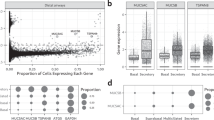Abstract
THE release of histamine and other mediators of immediate type anaphylactic reactions from mast cells is triggered by the interaction of antigen with cell-bound antibody. Antigen-induced histamine release and that induced by Compound 48/80 are energy-dependent processes which are depressed by metabolic inhibitors and follow a similar time course1–3. This type of selective release of histamine is inhibited by the potent anti-asthmatic drug disodium cromoglycate (DSCG)4, whereas the non-selective release induced by agents such as the detergent ‘Triton X-100’, which follows a different time course and is not energy dependent, is not blocked by DSCG. It has therefore been postulated4,5 that histamine is released from mast cells by two distinct mechanisms: a selective release of amine-containing granules through a process of exocytosis, and a non-selective release of amines and other cellular constituents as a result of lysis of cell membranes.
This is a preview of subscription content, access via your institution
Access options
Subscribe to this journal
Receive 51 print issues and online access
$199.00 per year
only $3.90 per issue
Buy this article
- Purchase on Springer Link
- Instant access to full article PDF
Prices may be subject to local taxes which are calculated during checkout
Similar content being viewed by others
References
Högberg, B., and Uvnäs, B., Acta Physiol. Scand., 48, 133 (1960).
Mota, I., and Ishii, T., Brit. J. Pharmacol., 15, 8 (1960).
Bloom, G. D., Fredholm, B., and Haegermark, O., Acta Physiol. Scand., 71, 270 (1967).
Orr, T. S. C., Hall, D. E., Gwilliam, J., and Cox, J. S. G., Life Sciences, 10, 805 (1971).
Johnson, A. R., and Moran, N. C., J. Pharmac. Exp. Ther., 175, 627 (1970).
Allison, A. C., Davies, P., and de Petris, S., Nature, 232, 153 (1971).
Schroeder, T. C., Biol. Bull., 137, 413 (1969).
Wessels, N. K., Spooner, B. S., Ash, J. R., Bradley, M. O., Luduenda, M. A., Taylor, E. L., Wrenn, J. T., and Yamada, K. M., Science, 171, 135 (1971).
Anton, A. H., and Sayre, D. F., J. Pharmac. Exp. Ther., 166, 285 (1969).
Orr, T. S. C., Gwilliam, J., and Cox, J. S. G., Immunology, 21, 405 (1971).
Saeki, K., Jap. J. Pharmacol., 14, 375 (1964).
Ebashi, S., and Endo, M., Prog. Biophys. Mol. Biol., 18, 123 (1968).
Hurwitz, L., and Suria, A., Ann. Rev. Pharmacol., 11, 303 (1971).
Gingell, D., J. Embryol. Exp. Morphol., 23, 583 (1970).
Rubin, R. P., Pharmacol. Rev., 22, 389 (1970).
Fitzgerald, T. J., Williams, B., and Uyeki, E. M., Proc. Soc. Exp. Biol. Med., 136, 115 (1971).
Malawista, S. E., Asterita, H., and Marsland, D. J., J. Cell Physiol., 68, 13 (1967).
Rasmussen, H., Science, 170, 404 (1970).
Author information
Authors and Affiliations
Rights and permissions
About this article
Cite this article
ORR, T., HALL, D. & ALLISON, A. Role of Contractile Microfilaments in the Release of Histamine from Mast Cells. Nature 236, 350–351 (1972). https://doi.org/10.1038/236350a0
Received:
Issue Date:
DOI: https://doi.org/10.1038/236350a0
This article is cited by
-
Morphological study of rat mast cells stimulated with compound 48/80 at different temperatures
Histochemistry (1994)
-
Cytochalasin-B-induced immunosuppression of murine allogeneic anti-tumor response and the effect of recombinant human interleukin-2
Cancer Immunology Immunotherapy (1991)
-
The existence of filaments connecting the granules and the cell membrane in rat peritoneal mast cells
Agents and Actions (1991)
-
Microfilament-associated degranulation of sensitized guinea-pig lung mast cells
Agents and Actions (1989)
-
Distribution of actin filaments in rat mast cells and its role in histamine release
Agents and Actions (1986)
Comments
By submitting a comment you agree to abide by our Terms and Community Guidelines. If you find something abusive or that does not comply with our terms or guidelines please flag it as inappropriate.



